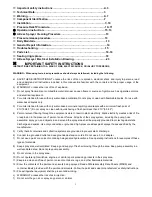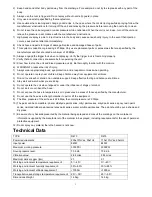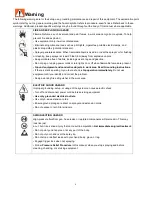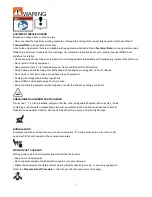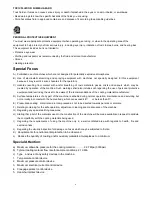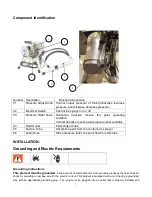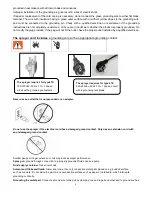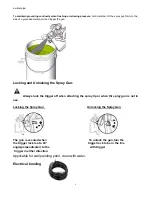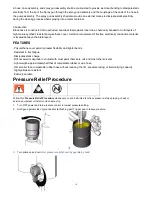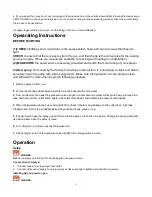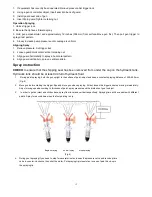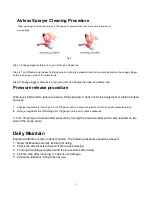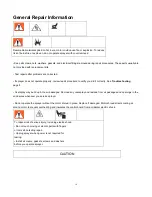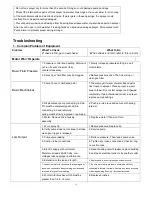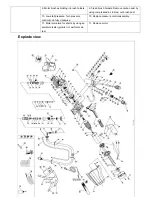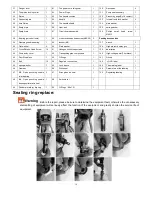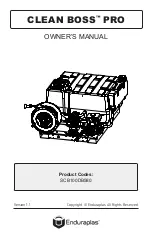
15
• Do not run sprayer dry for more than 30 seconds. Doing so could damage pump packings.
• Protect the internal drive parts of this sprayer from water. Openings in the cover allow for air cooling
of the mechanical parts and electronics inside. If water gets in these openings, the sprayer could
malfunction or be permanently damaged.
• Prevent pump corrosion and damage from freezing. Never leave water or water-base paint in sprayer
when its not in use in cold weather. Freezing fluids can seriously damage sprayer. Store sprayer with
Pump Armor to protect sprayer during storage.
Troubleshooting
1. Common Problem of Equipment
Problem
What To Check
(If check is OK, go to next check)
What To Do
(When check is not OK, refer to this column)
Motor Won’t Operate
Basic Fluid Pressure
1. Pressure control knob setting. Motor will
not run if set at minimum (fully
counter-clockwise).
1.Slowly increase pressure setting to see if
motor starts
2. Spray tip or fluid filter may be clogged.
2.Relieve pressure ,then Then clear clog or
clean gun filter
Basic Mechanical
1. Pump frozen or hardened paint
1.Thaw sprayer if water or water-based paint
has frozen in sprayer. Place sprayer in warm
area to thaw. Do not start sprayer until thawed
completely. If paint hardened (dried) in sprayer,
replace pump packings.
2. Displacement pump connecting rod pin.
Pin must be completely pushed into
connecting rod and retaining
spring must be firmly ingroove or pump pin.
2. Push pin into place and secure with spring
retainer.
3. Motor. Remove drive housing
assembly.
3.
Replace motor if fan won’t turn.
Low Output
1. Worn spray tip.
1.Relieve pressure
,
Replace tip
2
. Verify pump does not continue to stroke
when gun trigger is released.
2. Service pump.
3. Prime valve leaking.
3.
Relieve pressure
,
Then repair prime valve.
4. Suction tube connections
4. Tighten any loose connections. Check o-ring
on suction tube.
5. Electric supply with volt meter.
Meter must read 220-240 Vac. Low
voltages reduce sprayer performance.
5. Reset building circuit breaker; replace building
fuse. Repair electrical outlet or try another outlet.
6. Extension cord size and length.
6. Replace with a correct, grounded extension cord.
7. Leads from motor to circuit board for damaged or
loose wire connectors. Inspect wiring insulation and
terminals for signs of overheating.
7. Be sure male terminal pins are centered and firmly
connected to female terminals. Replace any loose terminals
or damaged wiring. Securely reconnect terminals.
8. Worn motor brushes which must be
greater than 1/4 in. (6 mm).
8. Replace brushes.


